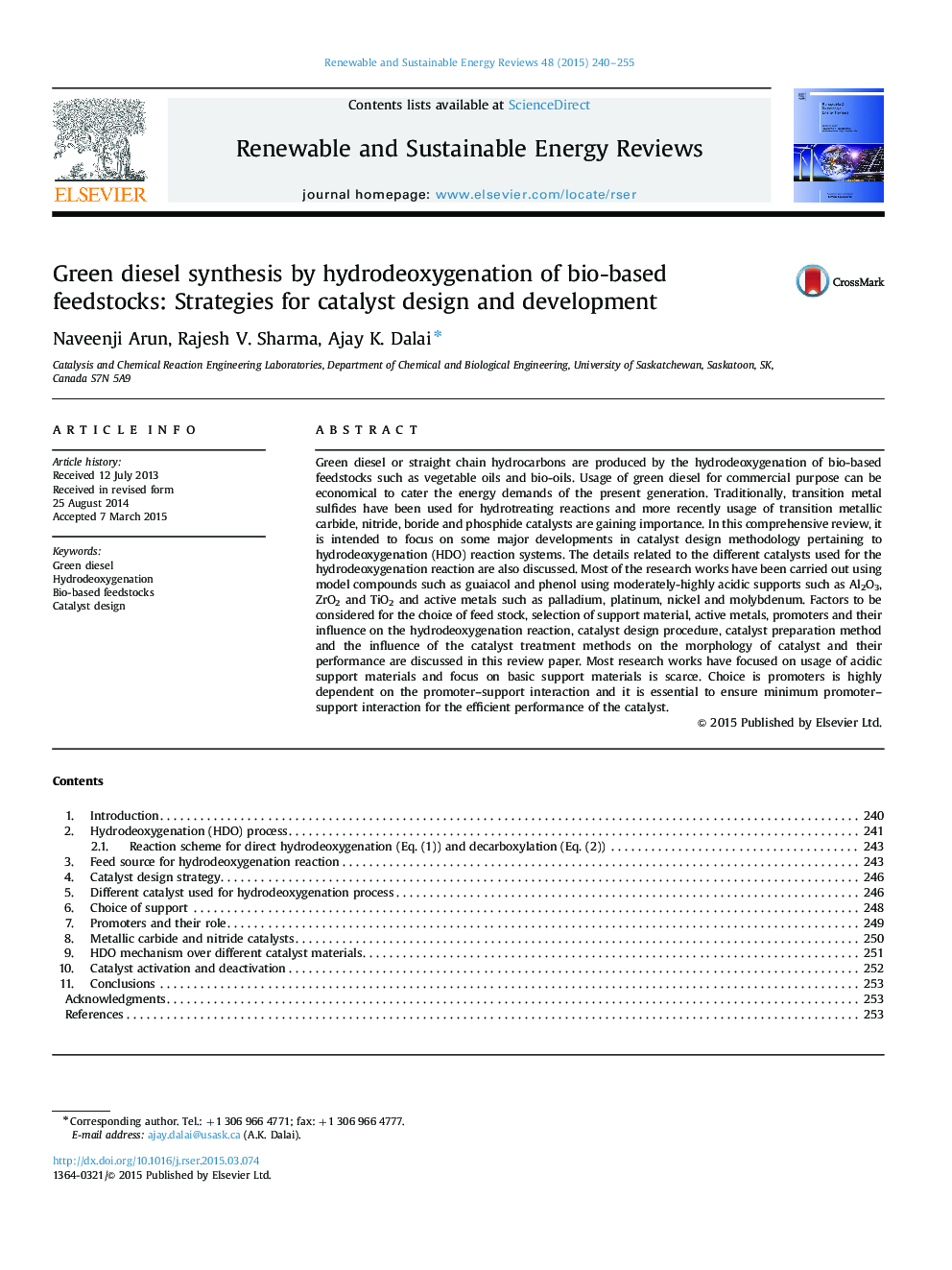| Article ID | Journal | Published Year | Pages | File Type |
|---|---|---|---|---|
| 8116428 | Renewable and Sustainable Energy Reviews | 2015 | 16 Pages |
Abstract
Green diesel or straight chain hydrocarbons are produced by the hydrodeoxygenation of bio-based feedstocks such as vegetable oils and bio-oils. Usage of green diesel for commercial purpose can be economical to cater the energy demands of the present generation. Traditionally, transition metal sulfides have been used for hydrotreating reactions and more recently usage of transition metallic carbide, nitride, boride and phosphide catalysts are gaining importance. In this comprehensive review, it is intended to focus on some major developments in catalyst design methodology pertaining to hydrodeoxygenation (HDO) reaction systems. The details related to the different catalysts used for the hydrodeoxygenation reaction are also discussed. Most of the research works have been carried out using model compounds such as guaiacol and phenol using moderately-highly acidic supports such as Al2O3, ZrO2 and TiO2 and active metals such as palladium, platinum, nickel and molybdenum. Factors to be considered for the choice of feed stock, selection of support material, active metals, promoters and their influence on the hydrodeoxygenation reaction, catalyst design procedure, catalyst preparation method and the influence of the catalyst treatment methods on the morphology of catalyst and their performance are discussed in this review paper. Most research works have focused on usage of acidic support materials and focus on basic support materials is scarce. Choice is promoters is highly dependent on the promoter-support interaction and it is essential to ensure minimum promoter-support interaction for the efficient performance of the catalyst.
Related Topics
Physical Sciences and Engineering
Energy
Renewable Energy, Sustainability and the Environment
Authors
Naveenji Arun, Rajesh V. Sharma, Ajay K. Dalai,
